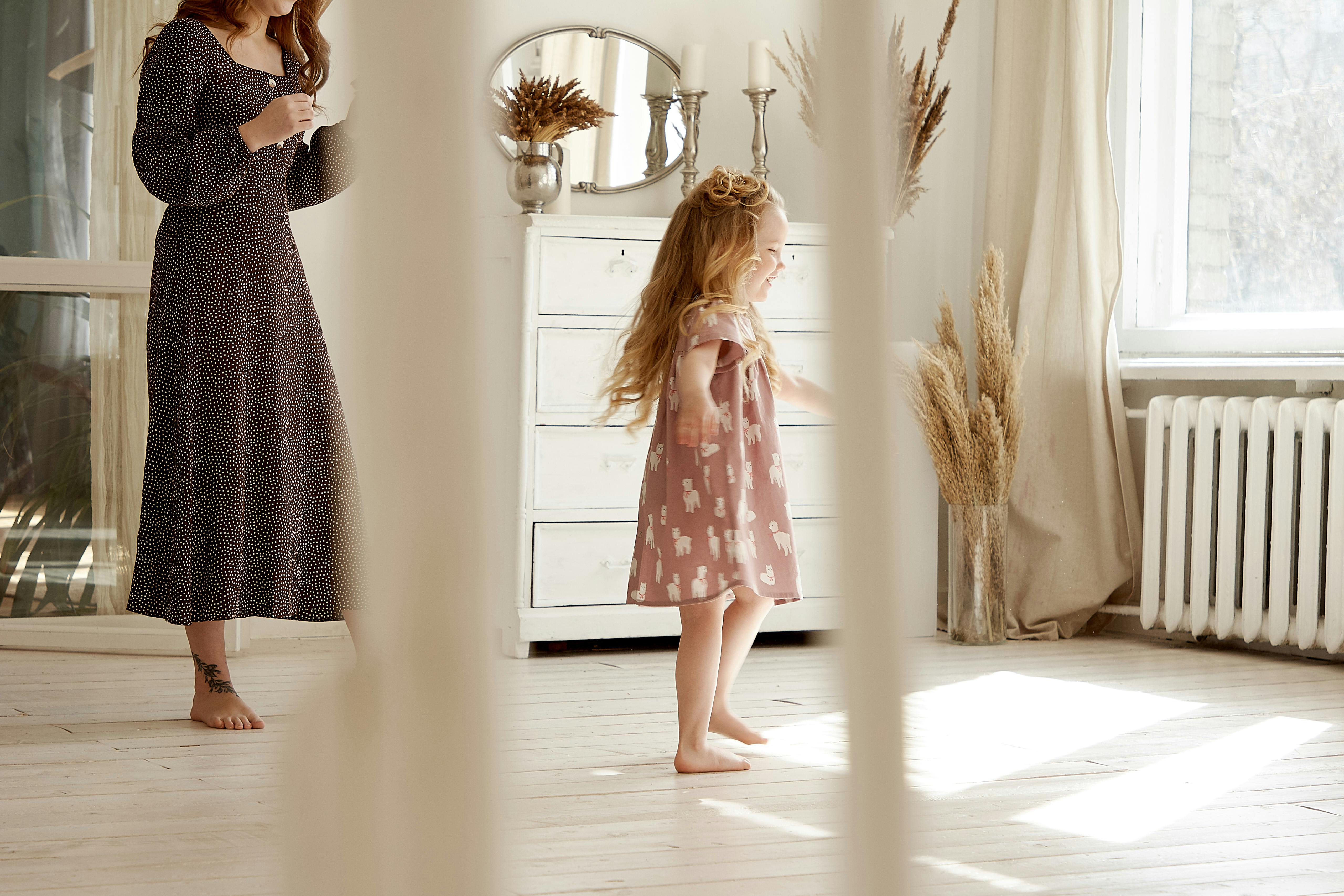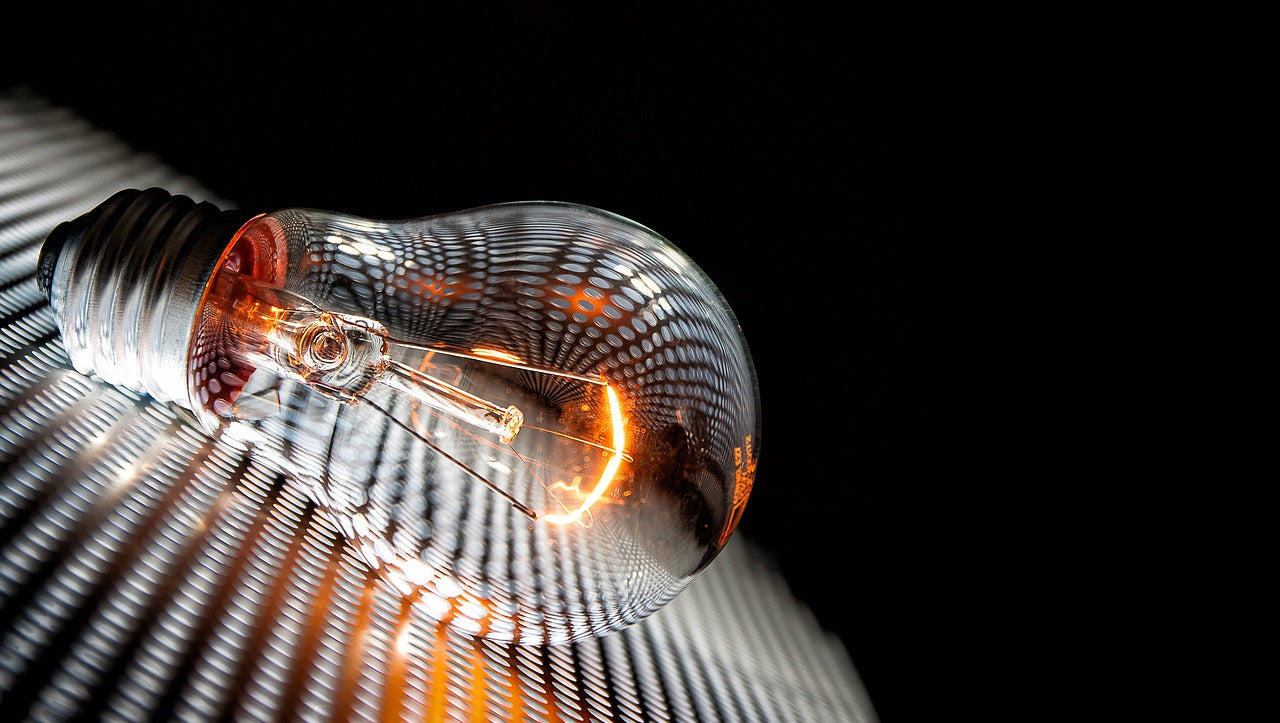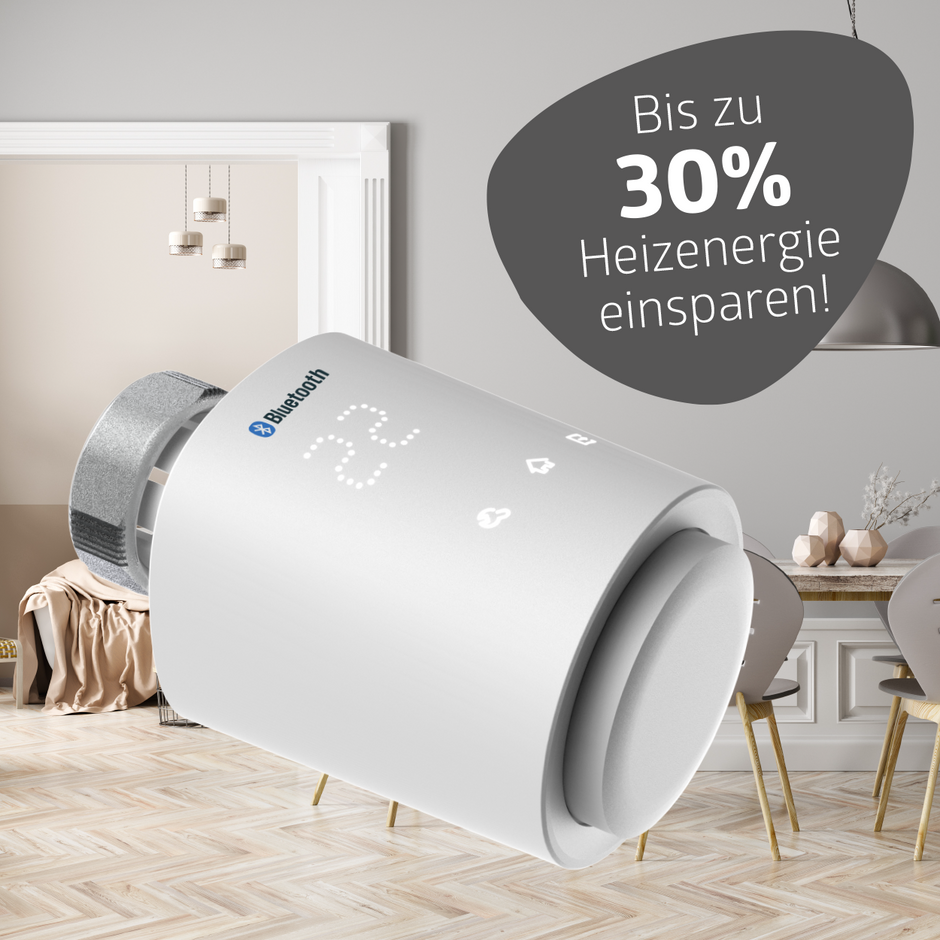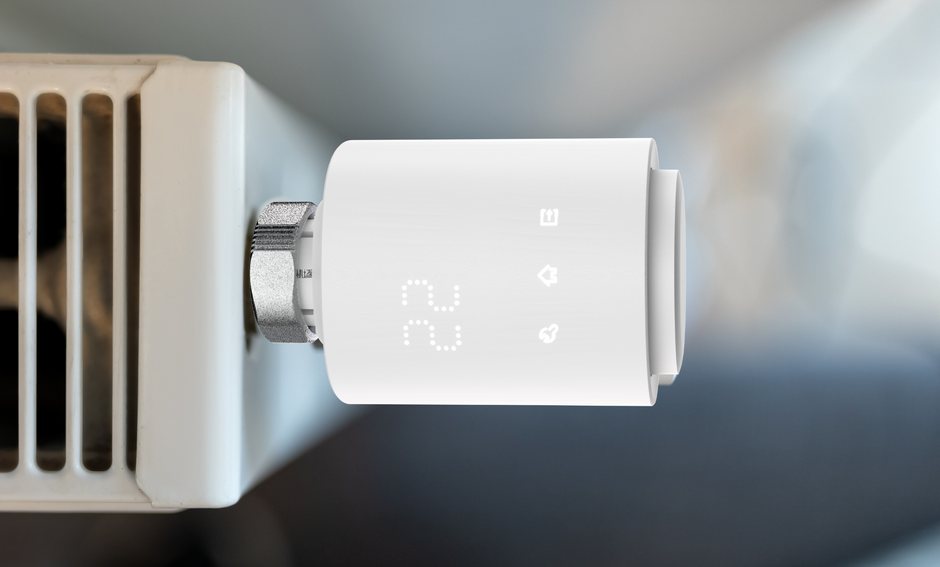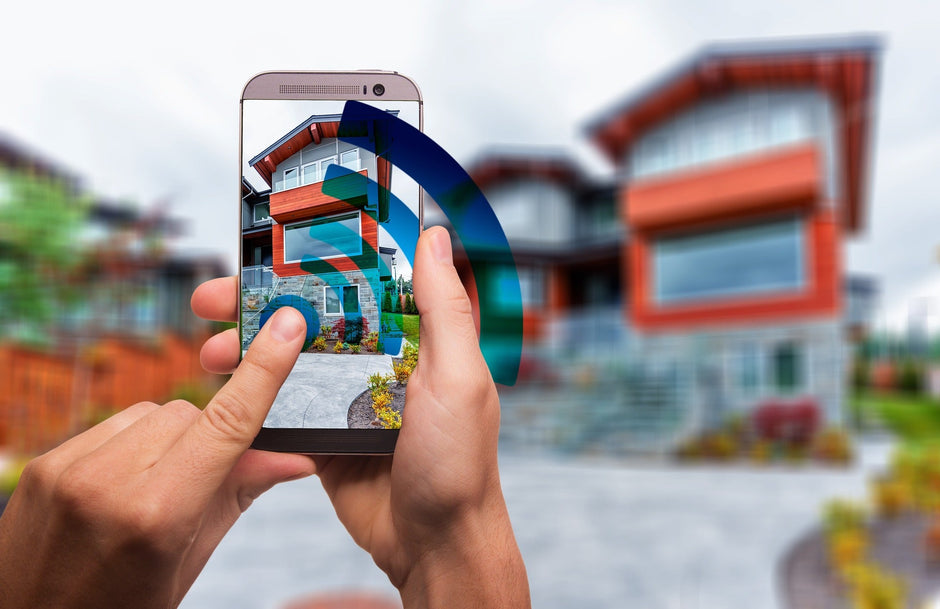The right light is important for our well-being. But what does the right lighting look like? Wouldn't every room need a customized lighting scenario that can be adjusted as needed? Recent studies from around the world suggest this is the case. They point to the advantages of intelligent lighting and its positive effects on health. But how do you achieve this type of lighting? It's simple: with smart home lighting control. Here you'll learn how it works, what you generally need to know about lighting, and what you need to set up the right lighting scenario in every room.
What is a smart home lighting control system?
Normal lamps are controlled via light switches. Nowadays, lamps (like other devices in a smart home) can be conveniently networked via the internet and then conveniently controlled from anywhere. This can be done via a smartphone app, a special control element, digital voice assistants (e.g., Alexa or Siri), or gestures. All you need to get started is A central unit that centrally networks all lights, buttons, sockets, and dimmers, enabling easy operation or automatic activation. This already works quite well today and without major difficulties. You just need to choose the right smart home system.
Smart lighting – what should you consider?
Example of a starter set with the basic components for a smart home lighting control system
Technically, it is actually quite easy: purchase the aforementioned Smart Home central unit, smart sockets, switches and buttons Buy it and get started . Good smart home providers offer starter sets that make getting started easier.
What's always very important when it comes to lighting: It's essential to consider the purpose of the room being illuminated! Because light sets the tone for people's "internal clock" and can also negatively influence it.
Before setting up your smart home lighting control system, consider: Is it a work, bedroom, or living area? Experts refer to this as "functional room or ambient lighting." Depending on this, you should choose the right light color and temperature, as well as the wattage of the lamps, and consider dimming. As a rough guide, you can say: During the day, cool white light with high blue components and high illuminance is recommended because it has an energizing effect. In the evening, warm white, subdued light with more red components is recommended, as this is relaxing and promotes good sleep.
Blue light and high illuminance for functional lighting
Daylight contains significantly more blue than red light. This type of light activates and suppresses the sleep hormone melatonin, allowing us to concentrate well during the day. Perfect for precisely those areas of the home where we work or are awake and want to stay awake. For all LUX nerds: Light with a wavelength of around 480 nanometers combined with high illuminance is optimal. Our recommendation for creating this lighting scenario: large-area ceiling lights that ensure optimal lighting conditions in the room. To support this, a desk lamp with a cool white light color can also be integrated into the smart home system as a direct light source.
With LUX and a flexible lighting concept against depressing moods at the desk
This is especially important in our latitudes during the darker winter months: Almost 40 percent of Germans suffer from a lack of motivation and mood swings during this time, which can develop into depression. Fortunately, this can be effectively counteracted with adjustable lighting. American study confirms They also found that good lighting leads to greater productivity. In the study, nine to 31 percent of respondents found their workplace unpleasant when it was lit only with direct lighting systems. 91 percent found the combination of direct and indirect lighting and numerous vertical luminaires pleasant. Productivity was even better when the lighting in the workplace was also dimmable. Workers were more alert, more persistent, and also more precise in their work.
Good to know: Older people require significantly more light at work than younger people! Not only because of age-related vision loss, but also because of their different concentration rhythms.
Red light and lower illuminance levels for ambient lighting
With the Smart Home lighting control, you can program not only high illuminance levels and cool color temperatures – tailored to the incoming daylight – into your system in the morning, but the Smart Home system also offers you the right lighting in the evening: You can choose dimmed, directed light or gently illuminate the room with lower lighting.
Little tip: Choose a combination of light ceilings that spread cool white light throughout the room during the day and spotlights or task lights with directed light that create relaxing lighting in the evening hours.
As you can see, the purpose of a room is very important when planning lighting, and sometimes there are situations where it would be a dream not to have to press the old light switch. For example, when you come home in the winter evening, laden with shopping bags, and it's pitch black in the hallway. Here are a few real-life examples and smart lighting inspiration:
Welcome Home! Turn on the lights at the right moment
The smart home welcomes you: With pre-installed lighting scenarios, you can not only turn on all the lights in your home with a single click in the mobile app, but you can also program light switches to automatically turn on at a specific time. This is also achieved by networking the lamps, switches, sockets, and smartphone via a central unit, such as the wesmartify access point. Incidentally, these so-called Welcome Home functions are available in the smart home not only for lighting, but also for heating, blinds, air conditioning, and more.
Presence detectors in basement entrances, kitchen and bathroom
No more stumbling in the dark with sensor-based lighting scenarios that react to movement. This is ensured by so-called presence detectors. They are particularly well-suited for use at night in particularly large rooms or basements where light switches are difficult to reach. This also makes ecological sense: The lights only come on when they are actually needed and go off when there is no movement in the room. A presence detector is also recommended in hallways and basements because it sends a message to your smartphone and triggers an alarm when the protection function is activated.
Dimmer for the living area
Another great invention for smart home lighting control is the dimmer switch. These allow you to better adapt the lighting to your daily routine: The light comes on very slowly in the morning, similar to a natural sunrise, and then gradually dims up automatically. The dimmer switch is also useful in the evening, for later hours when you might prefer warmer light. You can now even dim it down from the couch using your smartphone.
Dimmer for the little ones' sleeping area
Anyone with children knows that creepy monsters often sneak under the bed and that falling asleep in complete darkness is a complete no-go. A small nightlight must always be left on in many children's rooms. Dimmer switches are the perfect solution: You can let your kids fall asleep peacefully with the light dimmed and turn it off from the living room after one or two hours. The absolute highlight is creating cozy atmospheres with a variety of light colors at your next pajama party. All possible with smart dimmer switches.
No more sleepless after brushing your teeth: Dimmer with selectable light colors in the bathroom
Parents are familiar with another phenomenon: After brushing their teeth in the bathroom in the evening, their dead-tired children suddenly seem to be "switched on" again. This can be due to the often high blue content in the light from bathroom lamps. Small receptors in the eyes pick up these light signals and signal to the body: "Wow, it's so bright, you need to wake up quickly: there's daylight everywhere!" And that's the end of their night's sleep. The reason for this is not only the light receptors, but also the sleep hormone melatonin, whose blood levels drop drastically when exposed to blue light with a wavelength of approximately 480 nanometers. The solution: Avoid blue light before bedtime and in bedrooms! Dimmer switches, which reduce the light intensity and create warm light colors, help prepare children for sleep. In general, we recommend spot-like lights that shine directly rather than over a wide area in all rooms in the evening, not least when using a reading light by your own bed!
Everything is so colorful here: the color spectrum of a lamp depends on the bulb
How does this work with the different color spectra, you might be wondering. It's quite simple: You need warm white LEDs (short for "light-emitting diodes"). These are electronic semiconductors that, when powered, emit light in the colors red, green, yellow, or blue. By adding an additional luminescent layer, blue LEDs can be used to produce white light.
Sustainability check: Smart lighting control measures and reduces energy consumption
According to the International Energy Agency (IEA), 15 percent of energy worldwide is invested in lighting. Smart lighting control opens up significant savings potential through more efficient use of this resource. The German Federal Government's Energy Saving Ordinance (EnEV), which has been in force in its revised form since 2014, specifically regulates the requirements for the efficient use of light. According to the ordinance, LED lights can be installed for sustainable use. Furthermore, a lighting control system can be used that uses dimmable lights to flexibly adjust brightness depending on the time of day. This can help save up to 35 percent of energy! In combination with presence detectors and timers, even 55 percent is possible. Not bad, this smart home lighting control system!
Something else enlightening on the topic: Some tools and devices for switching and dimming also offer the option of measuring the consumption of your lamps. There are special switches for this purpose; some are installed under the plaster, others above. You can find a selection here .
To get started setting up your custom lighting control system right away, you can purchase a practical starter kit here to help you get started. Do you have further questions or would you like a personal consultation at your location? Then please contact us directly: Contact


